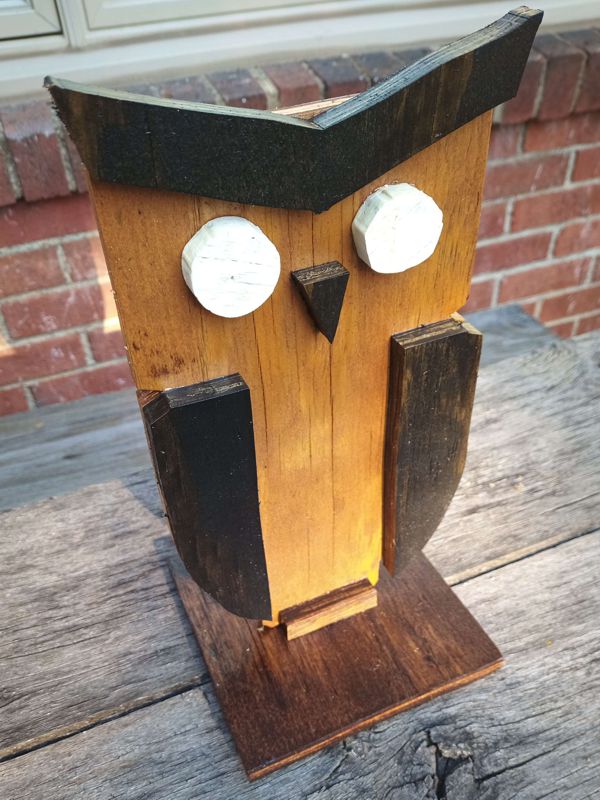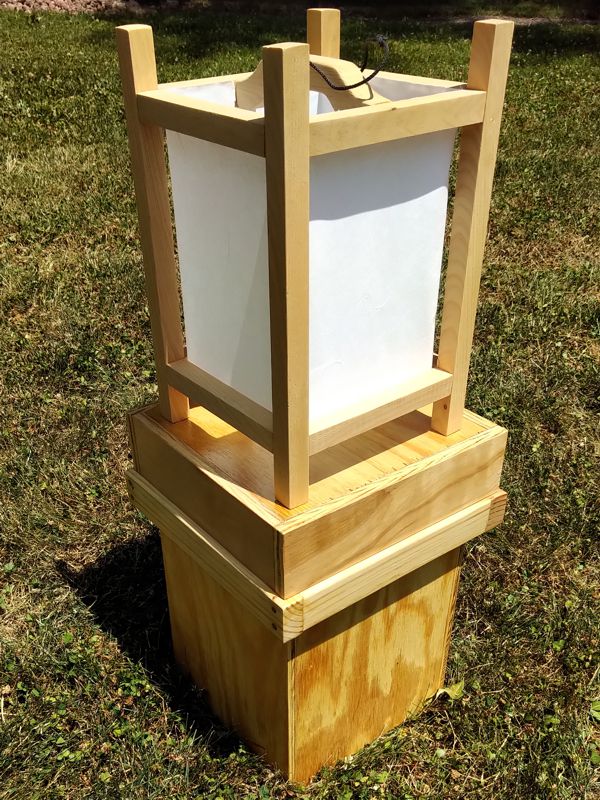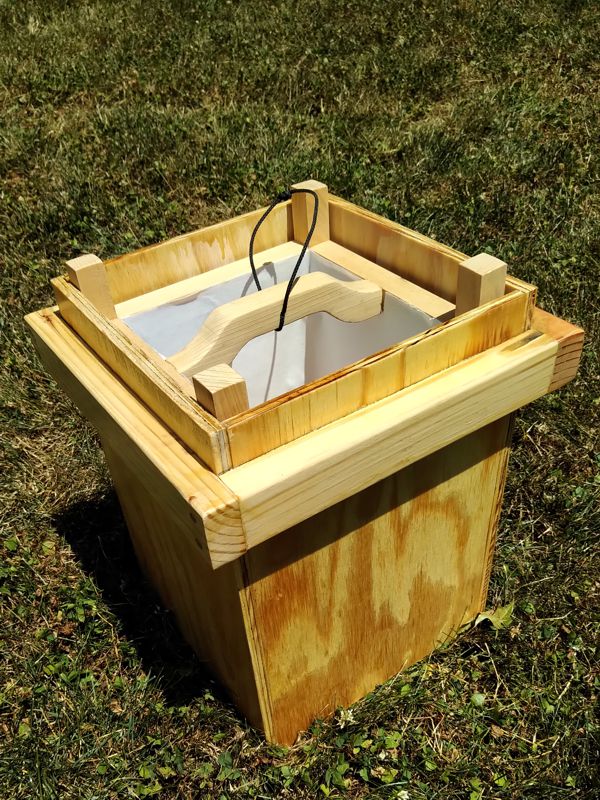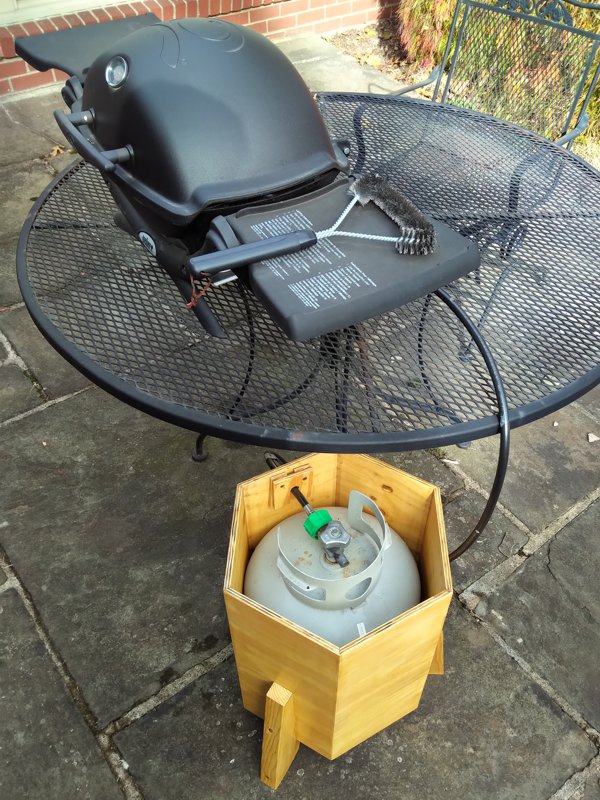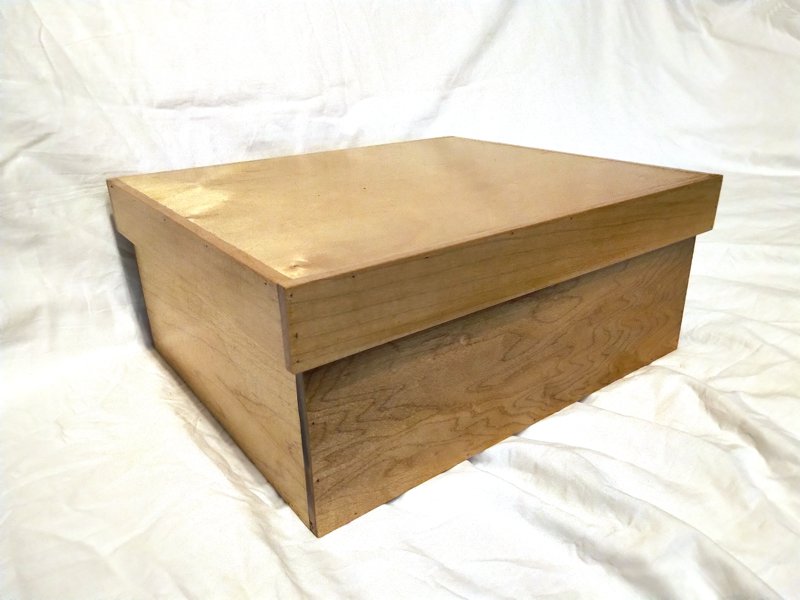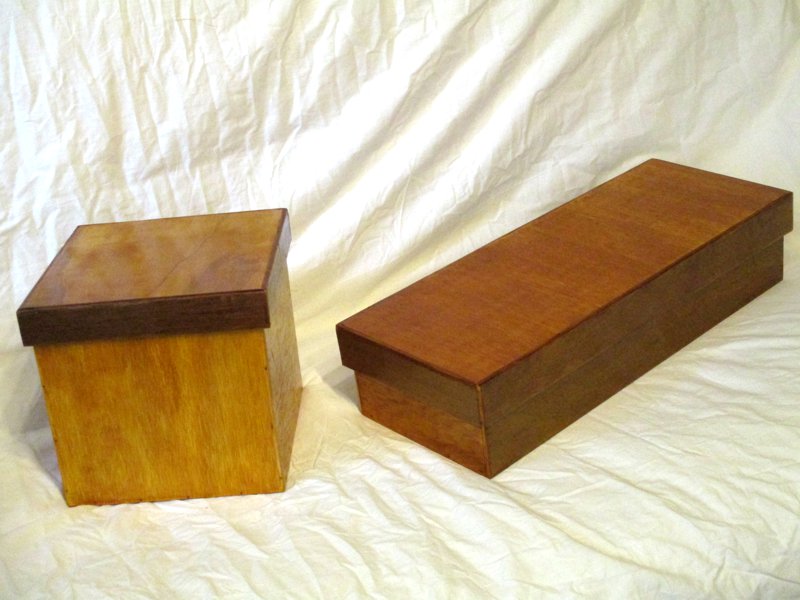At Pennsic this past year, during the discussion of “things we need in camp” that led to the shelves project, a friend offered to barter for a wooden box in which they could carry around their feast gear. A few weeks later I was in one of the DIY stores and bought a piece of lauan plywood that I thought might make a nice box. Lauan plywood has two smooth faces of thin veneer, sandwiching a single core layer of lightweight wood. It’s basically the wood equivalent of corrugated cardboard. As such, it is lightweight, reasonably durable, and attractively priced.
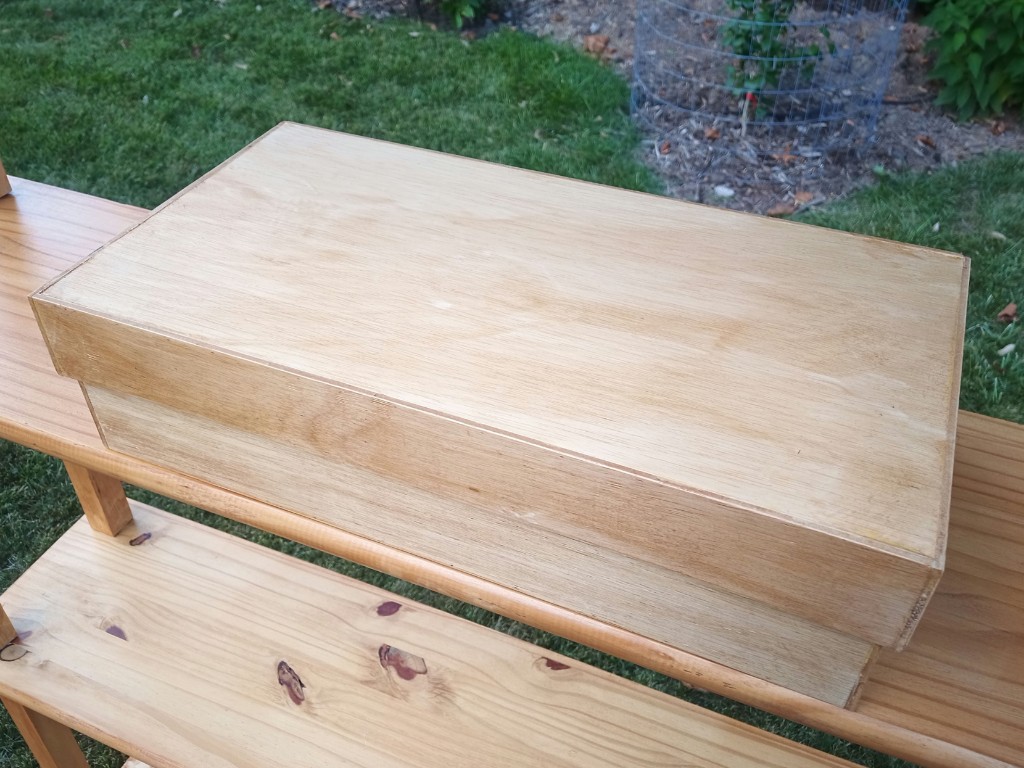
The interior of this lidded box is roughly 24 inches long, by 12 inches wide, by 6 inches deep. The lid fits fairly snugly. I added some surplus maple strips to the joins to hopefully boost its durability. Everything is glued together and reinforced with 23-gauge pins, but I figured a little bracing could not hurt. I put a light coat of stain on the surface to give it a little bit of water resistance.
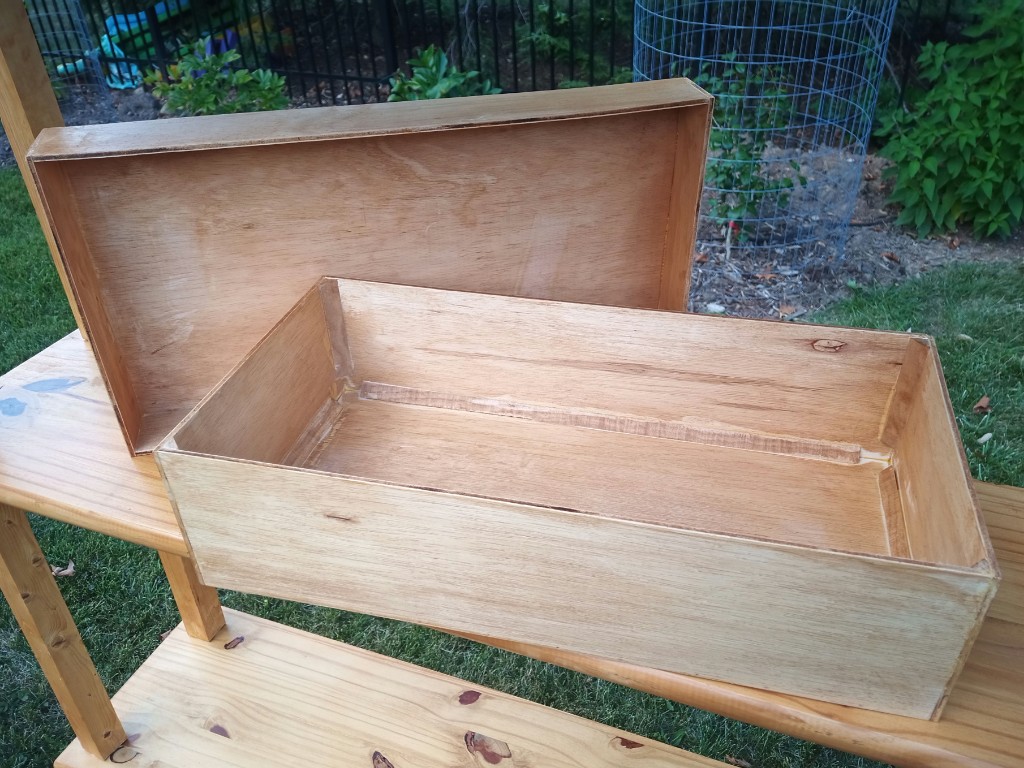
This was a quick project, and I was awfully glad to be able to just go out into the garage and make a thing that somebody I know needed. Maybe I’ll make a few of these to hide some of the plastic storage boxes and random items we have sitting around in camp.


